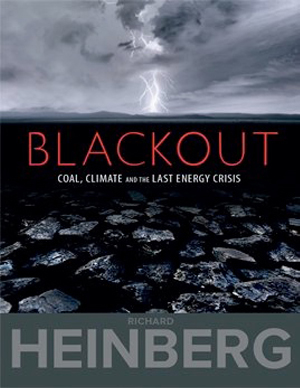
Blackout: Coal, Climate & The Last Energy Crisis
May 1, 2009
Coal fuels about 50 percent of US electricity production and provides a quarter of the country’s total energy. China and India’s ferocious economic growth is based almost entirely on coal-generated electricity. Coal currently looks like a solution to many of our fast-growing energy problems. However, while coal advocates are urging full steam ahead, increasing reliance on the dirtiest of all fossil fuels has crucial implications for the global climate, energy policy, the world economy, and geopolitics.
Coal advocates argue that America has 250 years’ worth of coal. They say that although it’s disastrous stuff, coal is cheap and abundant, and so we should find a way to capture the carbon dioxide released from power plants. But what if the basic premise of that argument is wrong? What if coal isn’t as abundant as everyone thinks, and will be getting more expensive, and scarce, very soon? That’s the conclusion of a series of groundbreaking reports discussed in Blackout: Coal, Climate, and the Last Energy Crisis.
The book includes information from the National Academy of Science and the U.S. Geological Survey. Blackout goes to the heart of the tough energy questions that will dominate every sphere of public policy throughout the first half of this century, and is a must-read for planners, educators, and anyone concerned about energy consumption, peak oil and climate change.
